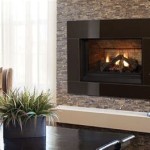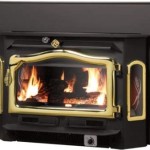Understanding Direct Vent Propane Fireplace Stoves
Direct vent propane fireplace stoves offer an efficient and aesthetically pleasing heating solution for residential and commercial spaces. These appliances distinguish themselves from traditional fireplaces and other heating methods through their sealed combustion system and reliance on propane fuel. The following article provides a comprehensive overview of direct vent propane fireplace stoves, encompassing their functionality, advantages, installation considerations, and maintenance requirements.
The core principle of a direct vent propane fireplace stove lies in its sealed combustion chamber. This design means the stove draws air from outside the building for combustion and expels exhaust gases directly to the exterior through a dedicated venting system. This contrasts sharply with traditional wood-burning fireplaces, which draw air from within the room and vent exhaust through a chimney. Consequently, direct vent systems minimize heat loss and eliminate the risk of indoor air pollution from combustion byproducts.
Propane, a liquefied petroleum gas (LPG), serves as the fuel source for these stoves. Propane offers a high energy density, making it an efficient heating option. It is readily available in many areas and can be stored in tanks, providing a reliable fuel supply independent of natural gas lines. The combustion of propane produces fewer greenhouse gases than burning wood or other fossil fuels, positioning it as a relatively cleaner-burning heating alternative.
Key Point 1: Operational Mechanics and Efficiency
The operation of a direct vent propane fireplace stove involves a series of precisely controlled processes. When the stove is activated, a pilot light or electronic ignition system initiates the combustion process. Propane flows into the burner assembly, where it mixes with air drawn from outside the building through the outer portion of the direct vent pipe. The mixture ignites, producing flames that are directed over a ceramic log set or other decorative media. This creates the visual effect of a traditional fireplace while generating heat.
The efficiency of a direct vent propane fireplace stove is significantly higher than that of a traditional fireplace. Because the combustion chamber is sealed and outside air is used for combustion, minimal indoor air is consumed or lost. Furthermore, the direct vent system ensures that all exhaust gases are expelled outside, preventing heat loss up a chimney. This results in a heating efficiency rating that can range from 70% to 90% or higher, meaning that a larger proportion of the propane's energy is converted into usable heat for the room.
Many direct vent propane fireplace stoves are equipped with thermostatic controls. These controls allow users to set a desired room temperature, and the stove will automatically adjust its heat output to maintain that temperature. This provides consistent and comfortable heating while conserving propane usage. Some models also feature programmable timers, enabling users to schedule heating cycles based on their specific needs.
Modern direct vent propane fireplace stoves often incorporate advanced features such as variable flame height adjustments, remote control operation, and electronic ignition systems. These features enhance user convenience and control over the heating process. Diagnostic systems are also commonly included, alerting users to potential issues with the stove's operation.
Key Point 2: Installation Considerations and Venting
Proper installation is crucial for the safe and efficient operation of a direct vent propane fireplace stove. Installation should be performed by qualified professionals who are familiar with local building codes and manufacturer specifications. The installation process typically involves connecting the stove to a propane supply line, installing the direct vent system, and ensuring proper ventilation.
The direct vent system consists of two concentric pipes: an inner pipe that expels exhaust gases and an outer pipe that draws in fresh air for combustion. The vent system must be installed according to the manufacturer's instructions to ensure proper draft and prevent the backflow of exhaust gases into the home. The venting system can typically be run either horizontally through an exterior wall or vertically through the roof, depending on the stove's design and the layout of the building.
Clearances to combustible materials are another critical consideration during installation. The stove must be positioned at a safe distance from walls, furniture, and other flammable objects to prevent the risk of fire. Specific clearance requirements vary depending on the stove model and should be strictly adhered to. In addition, the propane supply line must be installed and tested for leaks by a qualified gas fitter.
Consideration should be given to the location of the propane tank. It must be situated in accordance with local regulations, typically a minimum distance from buildings and other structures. The tank must be properly secured and protected from damage. Regular inspections of the tank and supply lines are essential to ensure their integrity and prevent leaks.
Key Point 3: Advantages over Traditional Fireplaces and Other Heating Solutions
Direct vent propane fireplace stoves offer several advantages over traditional wood-burning fireplaces. As previously mentioned, they are significantly more efficient, converting a higher percentage of fuel energy into usable heat. They also eliminate the need for a chimney, which can be costly to build and maintain. Furthermore, direct vent stoves produce significantly fewer pollutants than wood-burning fireplaces, contributing to improved indoor air quality and reduced environmental impact.
Compared to other heating solutions, such as electric heaters or furnaces, direct vent propane stoves provide a more visually appealing and comforting heat source. The realistic flames and glowing embers create a warm and inviting atmosphere. They can also serve as a supplemental heating source, allowing homeowners to reduce their reliance on central heating systems and lower energy bills. In the event of a power outage, a propane stove can provide a reliable source of heat, unlike electric heaters.
The versatility of direct vent propane fireplace stoves is another significant advantage. They are available in a variety of styles and sizes, allowing homeowners to choose a model that complements their décor and meets their heating needs. They can be installed in various locations throughout the home, including living rooms, bedrooms, and basements. Some models are even designed for outdoor use, providing heat and ambiance to patios and decks.
The operational cost of a direct vent propane fireplace stove is dependent on propane prices and usage patterns. While propane prices can fluctuate, the high efficiency of these stoves helps to minimize fuel consumption. By using thermostatic controls and timers, homeowners can further reduce their propane usage and lower their heating bills. Regular maintenance, such as cleaning the burner assembly and inspecting the venting system, is also essential to ensure optimal efficiency and performance.
The convenience and ease of use of direct vent propane fireplace stoves are significant advantages for many homeowners. With the push of a button or the flip of a switch, the stove can be ignited and provide instant heat. There is no need to gather and stack firewood, clean up ashes, or worry about creosote buildup in a chimney. This makes direct vent propane stoves a hassle-free and enjoyable heating option.
In summary, direct vent propane fireplace stoves offer a compelling combination of efficiency, aesthetics, convenience, and environmental benefits. They provide a reliable and cost-effective heating solution while creating a warm and inviting atmosphere in residential and commercial spaces. Understanding their operational mechanics, installation considerations, and advantages is crucial for making informed decisions about heating options.

Direct Vent Gas Stoves In Dc

Direct Vent Gas Stoves

Intrepid Direct Vent Gas Stove The Place

Monessen Gas Stove Concorde Direct Vent

Oxford Direct Vent Gas Stove The Place

Heat N Glo Paloma Direct Vent Gas Stove

Star Direct Vent Gas Stove The Place

Thelin Gnome Gas Stove Hearth S Great American Fireplace In Menomonie Wi

Vantage Bayview Freestanding Direct Vent Gas Or Propane Fireplace Fireplaces By Cameron

Vermont Castings Radiance Direct Vent Gas Stove
Related Posts








